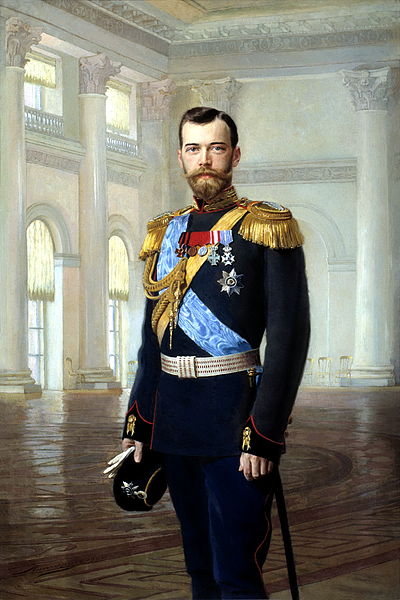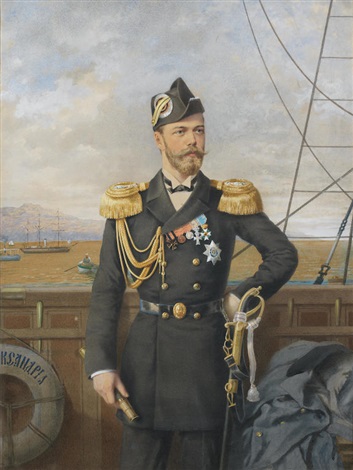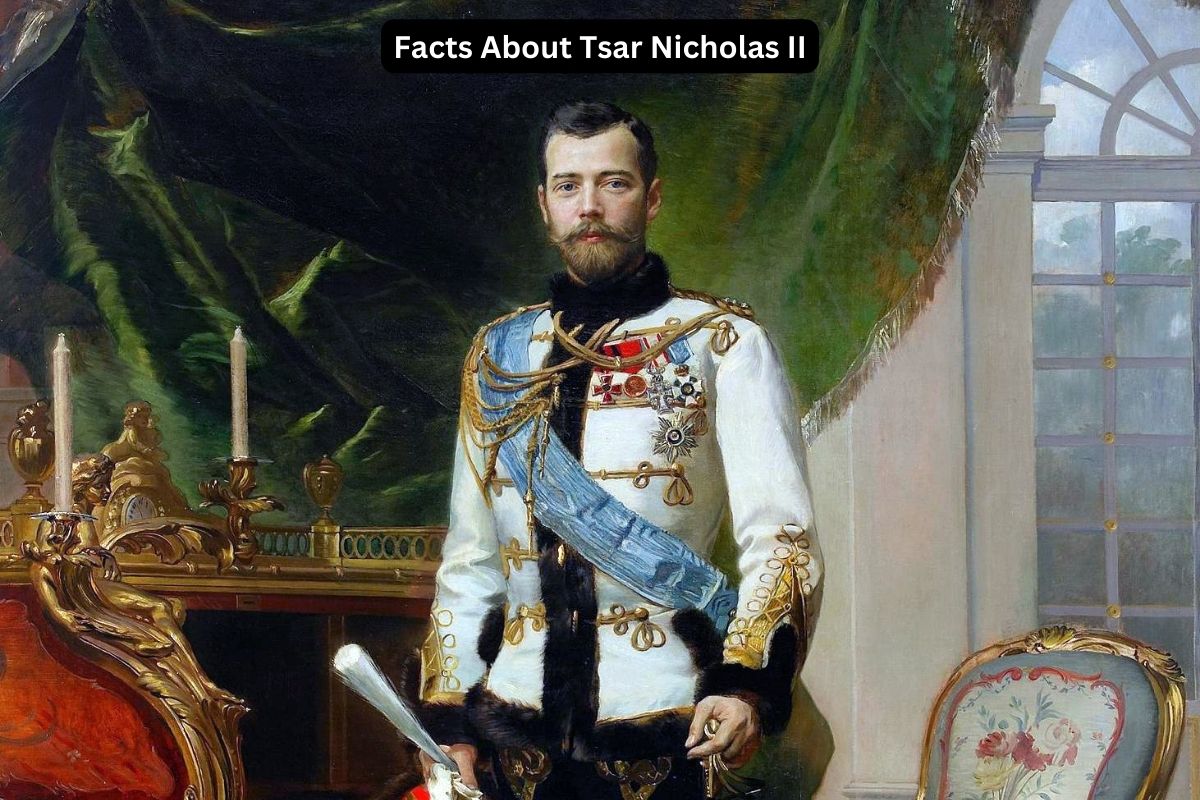In the annals of Russian history, few figures loom as large and enigmatic as Tsar Nicholas II.
From his ascension to the throne as the last Emperor of Russia to his tragic demise during the tumult of the Russian Revolution, Nicholas’s reign remains a subject of fascination and debate.
This article delves into the life and times of Nicholas II, examining his personal struggles, political challenges, and ultimately, his enduring legacy in the pages of history.
Join us on a journey through the complex world of imperial Russia as we unravel the mysteries surrounding one of its most controversial rulers.
Tsar Nicholas II Facts
1. Nicholas II was the last Emperor of Russia.
Nicholas II, born on May 18, 1868, ascended to the throne of the Russian Empire in 1894 upon the death of his father, Tsar Alexander III. He became the last Emperor of Russia, ruling over a vast and diverse empire spanning Eastern Europe and Asia.

2. He reigned from 1894 to 1917
During the pivotal years spanning from 1894 to 1917, Tsar Nicholas II held sway over the vast expanse of the Russian Empire.
Also Read: Romanovs Facts
As the last monarch of the Romanov dynasty, his reign witnessed a tumultuous period of social upheaval, political unrest, and ultimately, the downfall of imperial rule in Russia
3. Married Princess Alix of Hesse, who became Empress Alexandra Feodorovna
His marriage to Princess Alix of Hesse, who took the name Empress Alexandra Feodorovna upon her conversion to Russian Orthodoxy, occurred in 1894, the same year Nicholas became Tsar.
Their union symbolized the close ties between the Russian and German royal families, as Alexandra was a granddaughter of Queen Victoria of the United Kingdom.
4. They had five children: four daughters and one son, Alexei
The couple’s five children were a significant aspect of their family life and the monarchy’s public image. Their daughters—Olga, Tatiana, Maria, and Anastasia—were all born before their only son, Alexei, in 1904.
Also Read: Catherine the Great Timeline
The birth of a male heir was a relief to the dynasty, as it secured the succession, but it also intensified the family’s concerns due to Alexei’s hemophilia. The condition, which hindered his blood clotting ability, posed constant threats to his health and added immense pressure on the family.
5. Alexei suffered from hemophilia
Nicholas and Alexandra’s marriage was initially celebrated, but it faced numerous challenges. Despite their love for each other, their relationship was strained by the pressures of ruling an empire and personal tragedies, including the chronic illness of their son, Alexei, who suffered from hemophilia.
This condition heightened the family’s anxieties and led them to seek the aid of Grigori Rasputin, a controversial mystic who claimed to have healing powers, further adding to the complexities of their reign.

6. Nicholas faced social unrest, political discontent, and military failures
Nicholas II’s reign was marked by profound challenges, both domestically and internationally. Social unrest simmered throughout the empire, fueled by economic inequality, political repression, and dissatisfaction with the autocratic rule.
The Russo-Japanese War of 1904-1905 resulted in a humiliating defeat for Russia, further undermining the Tsar’s authority and sparking widespread discontent.
In response to mounting pressures, Nicholas was forced to concede to the demands of the people and grant a constitution, leading to the creation of the State Duma, Russia’s first elected legislative body, in 1906.
7. He abdicated in the February Revolution of 1917
Despite the concessions made following the 1905 revolution, Nicholas II’s rule continued to face resistance and instability. The outbreak of World War I in 1914 exacerbated existing problems, placing immense strain on the Russian economy and society.
The Tsar’s decision to personally lead the Russian army further disconnected him from the day-to-day governance of the country, leaving his wife, Empress Alexandra, and a series of incompetent ministers to manage state affairs.
Military failures, combined with food shortages, inflation, and the strain of war, intensified popular discontent and eroded support for the monarchy, ultimately leading to Nicholas’s abdication during the February Revolution of 1917.

8. The family was later executed by Bolshevik revolutionaries in 1918
Following Nicholas II’s abdication in the wake of the February Revolution of 1917, he and his family were placed under house arrest in various locations. Initially, they were confined to the Alexander Palace in Tsarskoye Selo, near St. Petersburg.
However, in August 1917, they were moved to Tobolsk in Siberia by the Provisional Government, seeking to distance the former Tsar from the capital’s political turbulence.
The Bolshevik Revolution in October 1917 dramatically altered the fate of Nicholas II and his family. With the Bolsheviks seizing power, the Romanovs’ situation became increasingly precarious. In April 1918, they were transferred to the town of Ekaterinburg, where they were held captive in the Ipatiev House, a requisitioned merchant’s mansion.
The tragic end of Nicholas II and his family came during the early hours of July 17, 1918. Bolshevik authorities, fearing that the advancing White Army (opponents of the Bolsheviks during the Russian Civil War) might rescue the Romanovs, decided to execute them.
Nicholas, Alexandra, their five children, and a few loyal servants were herded into the cellar of the Ipatiev House and summarily executed by a firing squad. The event, commonly referred to as the “Romanov massacre” or the “execution of the Romanovs,” marked the end of the Romanov dynasty’s rule in Russia.
9. Canonized as passion bearers by the Russian Orthodox Church
In 2000, the Russian Orthodox Church Outside Russia canonized Nicholas II, Alexandra, and their children as passion bearers, recognizing them as martyrs. This act was later endorsed by the Russian Orthodox Church in 2008, further solidifying their status as saints in the eyes of the faithful.
10. His reign remains a subject of historical debate and fascination
The legacy of Nicholas II and the Romanov family has been the subject of ongoing historical debate and fascination. While some view Nicholas as an ineffective ruler whose reign was marked by political repression and social turmoil, others sympathize with him as a tragic figure caught in the tumult of Russian history.
The execution of the Romanovs has also sparked controversy and speculation, with various conspiracy theories emerging over the years.
